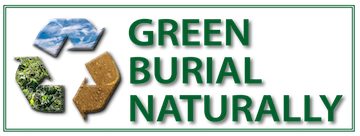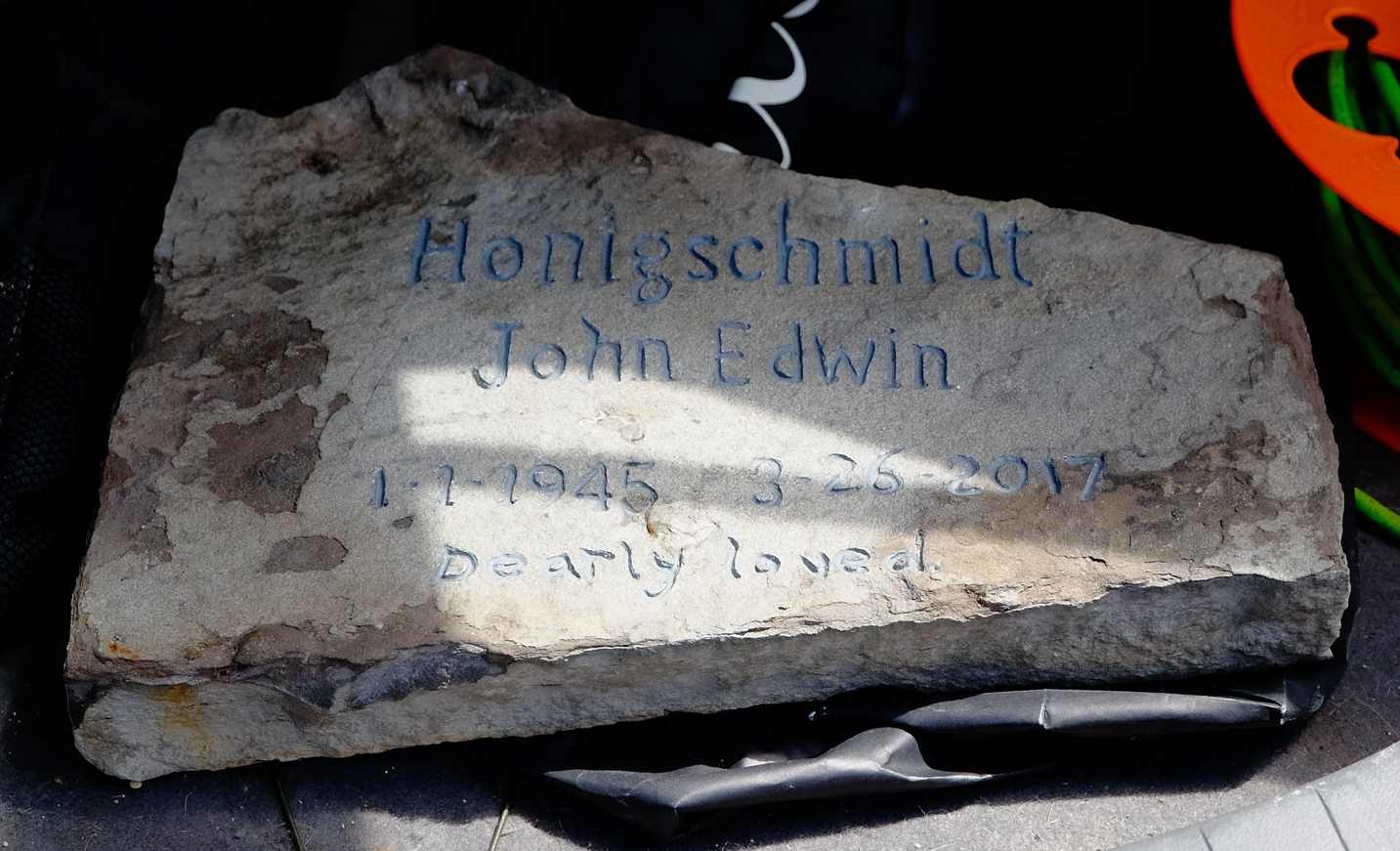Mystery question for what happens after death: Where is my plot?
No, not the cemetery; I mean, which surveyed piece of land is my body or that of my loved one going to be buried in?
Problems like this often don't emerge until someone dies. Americans have an aversion to death thinking which makes sense since life's strongest imperative is to live. But a bit of planning improves the chances of getting a green funeral and burial.
When Tom and I picked out the gravesite for my father's natural burial last summer it was just after he died, but I knew about the process. I'd also been to the cemetery on several occasions. Natural cemeteries change with the seasons, the landscape is an integral part of the experience, and it would have been disorienting to have selected my father's plot in winter bareness and then bury him as we did in full summer with its dense vegetation and insect life.
But the order in which afterdeath decisions are taken varies with circumstances and on a recent visit to Texas I experienced a gravesite choosing very different from my own. Ellen Macdonald, owner and "queen" of Eloise Woods Community Natural Burial Park just south of Austin, joined me and Melissa Unfred, an independent funeral director who works with green burial customers, as guests on Shades of Green environmental talk radio and afterward I asked to Eloise Woods to see the changes since my first visit almost three years ago. While Ellen and Tom and I were chatting, Melissa called to say she was with a woman whose husband had just died in the hospital; she wanted green burial for him, could she come out to discuss?
Nan and her friend Madeline arrived in a rattly Ford Explorer, driving up Ellen's dirt lane into the shade of her oak trees. Nan is Thai, and her friend acted as translator and facilitator. Nan ideally wanted Jim laid out on the ground for the vultures to clean his bones so first we had to get across that this wasn't something you do in America, and second that the principles of green burial would be a suitable alternative. How to explain American conventional burial, which we knew would be so different? I made the case that even though earth would cover Jim's body he'd be buried shallow enough that worms and bugs and microbes could get to him to clean his bones.
Once the formalities were taken care of we walked Ellen's paths searching for a gravesite. Ellen knows her property and the reasons people choose to be buried one place rather than another but it all began to look the same and I wondered how one would ever settle on a spot when seeing the cemetery here for the first time. Eloise Woods' 9+ acres flow down a hillside furrowed with ravines, covered with oak and mesquite and cedar forests. But not all is forest; interspersed are small areas of grass that in spring turn into wildflower meadows. As we passed through particularly dense woods Madeline suddenly said that Jim was a desert rat, and wasn't there an open place for him? With a real goal in mind, within five minutes Nun had chosen a spot in one of Ellen's grassy meadow sections. It wasn't what I would have taken but it was her personal choice.
Nun also wanted Jim laid out in her home until the burial, and this could easily be accommodated now that she was in the loop. But imagine your loved one dies in the hospital and you have a sense you don't want embalming, makeup, laying out, the emotional and physical distance from the body that conventional funeral and burial mean, how would you get from point a to point b? How would you even know the points exist unless you had read about green burial/funeral service?
Ellen said she does have families that take care of their dead from transporting, filing paperwork, washing and sheltering the body, to actual burying (though not digging--Ellen's soil is too hard for that) but they are from cultures where communal activity is usual. Perhaps more common is the story she told of a mother who wanted to bring her son to Eloise Woods when he died. Just exiting the hospital turned out to be a major drama as he was very large, and everyone found out really quickly how difficult it is to maneuver a dead body without professional help and morgue equipment.
Home funeral practitioners take care of these details and since Melissa had been called to the hospital to pick up Jim's body for the funeral home, Nun was lucky. You generally have to be pretty clued in to do all this. If you want to have a say in your burial or the burial of someone you love, educate yourself ahead of time. Pick out a cemetery if not a plot. Choose someone to help you manage--a funeral director, death doula, alternative afterdeath care practitioner. There'll be some expense involved but you're paying for someone else's expertise. If you have a family that wants to work together that's great, but you need to tell them ahead of time and you should all know what you are doing.
I would have attended the funeral but Jim was buried about the time we headed to Austin's airport. If I visit Eloise Woods again I can make a pilgrimage to his gravesite, see how it is settling into the landscape.













































